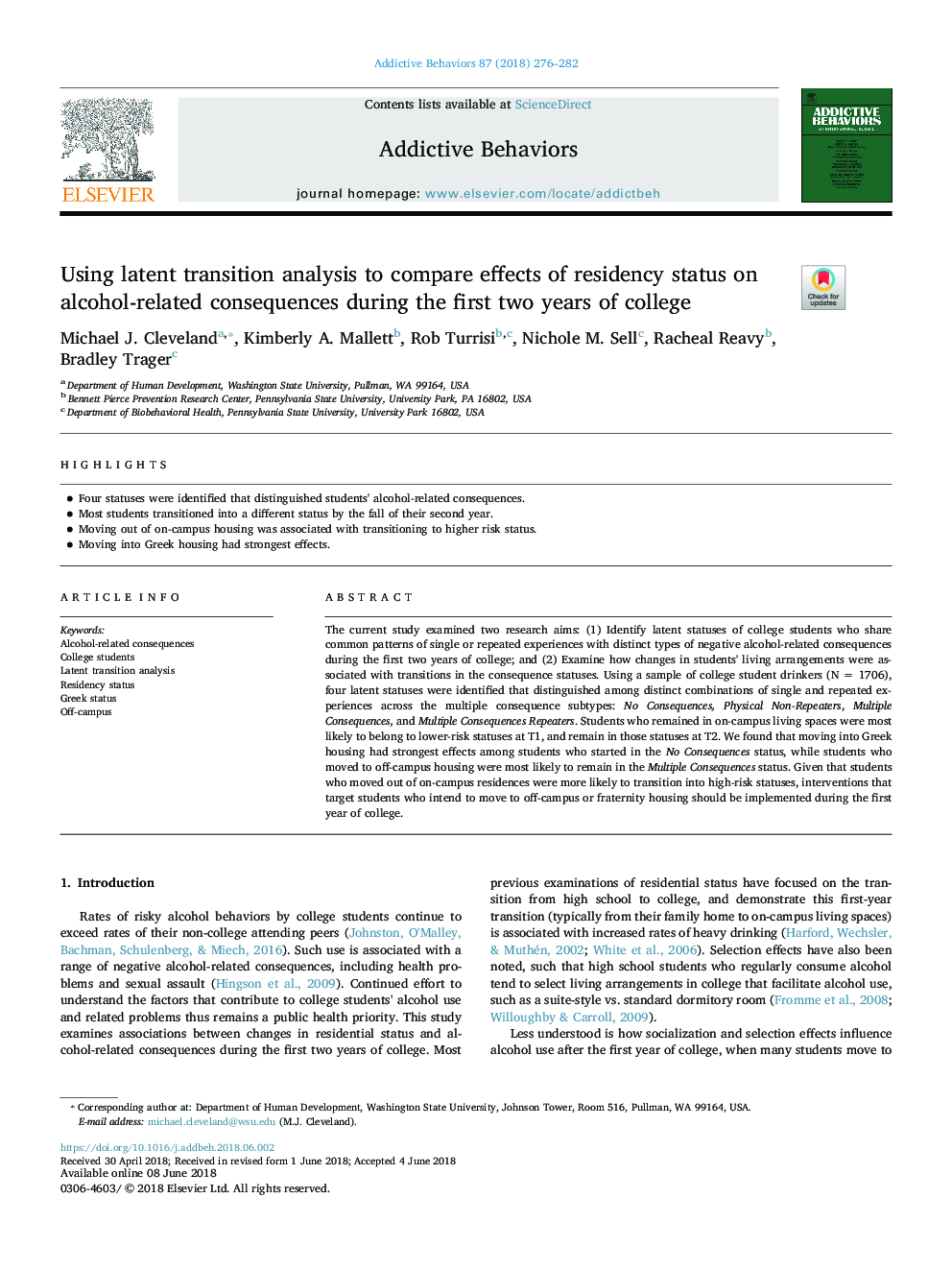| کد مقاله | کد نشریه | سال انتشار | مقاله انگلیسی | نسخه تمام متن |
|---|---|---|---|---|
| 11004439 | 1472484 | 2018 | 7 صفحه PDF | دانلود رایگان |
عنوان انگلیسی مقاله ISI
Using latent transition analysis to compare effects of residency status on alcohol-related consequences during the first two years of college
ترجمه فارسی عنوان
با استفاده از تجزیه و تحلیل انتقال پنهان به مقایسه اثرات وضعیت اقامت در پیامدهای مربوط به الکل در طول دو سال اول کالج
دانلود مقاله + سفارش ترجمه
دانلود مقاله ISI انگلیسی
رایگان برای ایرانیان
کلمات کلیدی
پیامدهای مربوط به الکل دانشجو، تجزیه و تحلیل گذار باقیمانده، وضعیت اقامت وضعیت یونان، خارج از دانشگاه،
موضوعات مرتبط
علوم زیستی و بیوفناوری
علم عصب شناسی
علوم اعصاب رفتاری
چکیده انگلیسی
The current study examined two research aims: (1) Identify latent statuses of college students who share common patterns of single or repeated experiences with distinct types of negative alcohol-related consequences during the first two years of college; and (2) Examine how changes in students' living arrangements were associated with transitions in the consequence statuses. Using a sample of college student drinkers (N = 1706), four latent statuses were identified that distinguished among distinct combinations of single and repeated experiences across the multiple consequence subtypes: No Consequences, Physical Non-Repeaters, Multiple Consequences, and Multiple Consequences Repeaters. Students who remained in on-campus living spaces were most likely to belong to lower-risk statuses at T1, and remain in those statuses at T2. We found that moving into Greek housing had strongest effects among students who started in the No Consequences status, while students who moved to off-campus housing were most likely to remain in the Multiple Consequences status. Given that students who moved out of on-campus residences were more likely to transition into high-risk statuses, interventions that target students who intend to move to off-campus or fraternity housing should be implemented during the first year of college.
ناشر
Database: Elsevier - ScienceDirect (ساینس دایرکت)
Journal: Addictive Behaviors - Volume 87, December 2018, Pages 276-282
Journal: Addictive Behaviors - Volume 87, December 2018, Pages 276-282
نویسندگان
Michael J. Cleveland, Kimberly A. Mallett, Rob Turrisi, Nichole M. Sell, Racheal Reavy, Bradley Trager,
